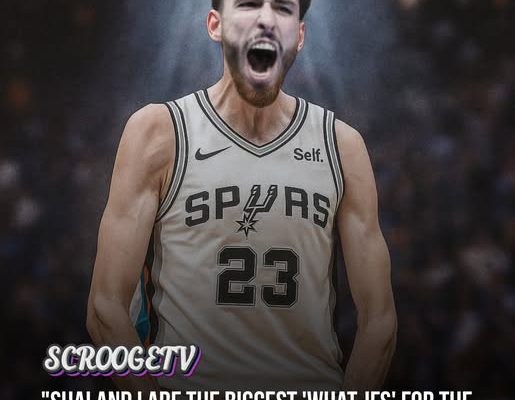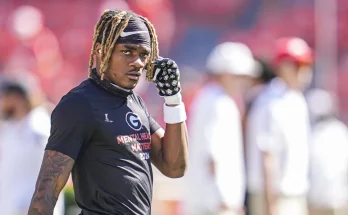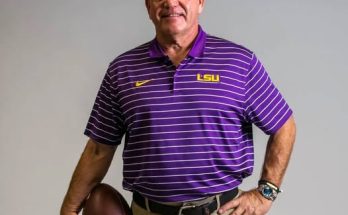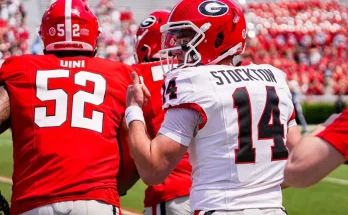Chet Holmgren, the rising star of the Oklahoma City Thunder, has never been one to shy away from confidence. Known for his unique combination of size, skill, and defensive prowess, Holmgren has taken another step into the spotlight with his latest comments regarding Victor Wembanyama, the San Antonio Spurs’ young sensation. In a statement that has sent ripples through the NBA community, Holmgren boldly claimed that the Spurs regret drafting Wembanyama instead of him. While such comments may sound like the type of competitive banter expected between elite athletes, Holmgren’s assertion speaks volumes about his mindset, the growing rivalry between the two promising big men, and how the NBA’s future is shaping up with this new wave of generational talent.
Holmgren’s journey to this moment is one defined by both adversity and relentless determination. Drafted second overall in the 2022 NBA Draft by the Thunder, Holmgren was seen as a game-changer, a modern big man who could protect the rim, stretch the floor, and move like a guard despite being seven feet tall. His rookie season was unfortunately derailed by a Lisfranc injury that required surgery and kept him sidelined for an entire year. During that time, all eyes shifted to the 2023 draft class and especially to Victor Wembanyama, the French phenom who was being touted as the most anticipated prospect since LeBron James. The Spurs, who secured the number one overall pick, were thrilled to land Wembanyama, while Holmgren quietly focused on rehabbing and preparing for his delayed NBA debut.
Fast forward to the present, and Holmgren has emerged as one of the most impactful young players in the league. His presence on the court has been transformative for Oklahoma City, a team that has rapidly transitioned from rebuilding to contending in the Western Conference. Holmgren’s ability to defend multiple positions, block shots, and shoot from deep has turned the Thunder into one of the most balanced and dangerous squads in the league. On the other hand, Wembanyama’s rookie season was as hyped as expected, with highlight-reel plays and jaw-dropping defensive sequences that demonstrated why the Spurs believed he could be their next franchise cornerstone. However, the Spurs’ struggles as a team have often overshadowed Wembanyama’s individual brilliance, leading to constant debates about whether San Antonio is wasting his talent or if he truly fits their system.
Holmgren’s remark about the Spurs regretting their draft decision is not just trash talk—it’s a statement loaded with competitive fire. He is essentially drawing a line in the sand, positioning himself as not only Wembanyama’s equal but as the superior choice if given the opportunity. This kind of rivalry is nothing new in NBA history. From Larry Bird and Magic Johnson in the 1980s to Kevin Durant and LeBron James in the 2010s, the league has always thrived on superstar battles that elevate the game’s narrative. Holmgren and Wembanyama are cut from that same cloth, and their individual matchups are quickly becoming must-watch television.
When Holmgren made his statement, fans and analysts immediately began dissecting its validity. Is Holmgren really better than Wembanyama? Statistically, the two are closer than some might think. Holmgren’s shooting percentages, especially from three-point range, are significantly better than Wembanyama’s. Holmgren has also showcased an advanced understanding of team defense, seamlessly rotating and helping while avoiding foul trouble—a rare skill for young big men. On the other hand, Wembanyama’s raw athleticism, shot-blocking, and scoring potential are unmatched. He’s taller, has a longer wingspan, and can dominate both ends of the floor when locked in. The difference often comes down to team context. Holmgren plays alongside Shai Gilgeous-Alexander and a deep, well-coached roster in Oklahoma City, while Wembanyama is still trying to lift a Spurs team that is in the midst of a rebuild.
What makes Holmgren’s comments particularly intriguing is how they reflect a shift in NBA culture. Players today are encouraged to express confidence and create narratives around themselves. In the era of social media and constant news cycles, a bold statement like Holmgren’s can spark weeks of debate and analysis. For the Thunder, this is also a sign of their young star’s leadership qualities. Holmgren isn’t just satisfied with being compared to Wembanyama—he wants to surpass him and prove that his name belongs among the league’s elite. His statement could also be seen as a psychological play, putting pressure on Wembanyama and the Spurs while further energizing Oklahoma City’s fan base.
The Thunder-Spurs rivalry, which has been relatively quiet since the days of Kevin Durant, Russell Westbrook, and Tim Duncan, might be reignited because of this dynamic. Both franchises are known for their player development and strong organizational culture. Oklahoma City is now seen as a rising powerhouse in the West, while San Antonio, despite its current struggles, has a rich history of success and a coach in Gregg Popovich who knows how to build winners. Holmgren’s claim adds a new layer of drama to their future matchups. Every time these teams face each other, the narrative of Holmgren versus Wembanyama will take center stage.
Holmgren’s confidence is not unfounded. His performance in big games this season has been stellar. Whether it’s stepping up in clutch moments, hitting key three-pointers, or anchoring the defense, Holmgren has consistently proven that he belongs among the league’s best young players. He’s averaging impressive numbers in points, rebounds, and blocks, all while shooting at an efficient clip. His versatility allows the Thunder to play various lineups, from small-ball units to traditional sets, without sacrificing defensive integrity. This adaptability is one of the reasons why Oklahoma City is seen as a legitimate contender moving forward.
Wembanyama, for his part, has also been phenomenal despite the Spurs’ record. His defensive instincts are elite, and his ability to alter shots without even blocking them is something only a handful of players in NBA history have possessed. Offensively, he’s still developing, but the flashes of brilliance—step-back jumpers, coast-to-coast drives, and post moves—are all there. The question isn’t whether Wembanyama will be great, but rather how quickly San Antonio can build a competitive roster around him. Holmgren’s comments, therefore, might not just be about individual talent but also about the differing trajectories of their teams.
Reactions to Holmgren’s statement have been mixed. Some fans applaud his self-belief, arguing that the best athletes are the ones who think they’re the best, even when facing tough competition. Others see it as unnecessary bulletin-board material that could motivate Wembanyama to take their next encounter personally. NBA veterans have weighed in too, with some praising Holmgren for having the right mindset and others cautioning that such comments can backfire if not backed up by performance. One thing is clear—Holmgren’s boldness has turned a routine comparison into one of the league’s hottest debates.
In the grand scheme of things, rivalries like this are what make the NBA compelling. Fans love having storylines to follow beyond the box scores, and Holmgren’s confidence adds a layer of intrigue to an already exciting season. The Thunder are currently on an upward trajectory, potentially ready to challenge for a top seed in the Western Conference, while the Spurs are trying to find their footing. If these two teams meet in a playoff series down the line, Holmgren’s comments will be revisited, dissected, and used as fuel for both sides.
For Holmgren, this moment is about more than just a soundbite. It’s about cementing his place among the league’s rising stars and showing the world that he is capable of leading a franchise to success. His journey from a highly touted high school prospect to a top draft pick, to sitting out a year due to injury, and now to becoming a centerpiece of a contending team, is a testament to his resilience. Making bold statements is one thing, but Holmgren has the game to back them up. That combination of skill and confidence is what separates the good from the great.
Looking ahead, the Holmgren-Wembanyama rivalry is poised to be one of the defining matchups of the next decade. Both players are revolutionizing the center position with their unique skill sets. They’re tall, agile, can shoot from distance, and protect the rim at an elite level. They represent the evolution of basketball, where traditional positions are becoming less relevant, and versatility is king. Holmgren’s assertion that the Spurs regret their choice might not be objectively true, but it reflects the kind of competitive fire that fuels greatness.
Ultimately, time will tell who truly becomes the better player. Wembanyama still has an immense ceiling, and as the Spurs continue to build around him, his impact will only grow. Holmgren, meanwhile, is thriving in a system that maximizes his talents, surrounded by young stars who complement his game. Their careers will inevitably be intertwined, with each trying to outdo the other. Holmgren’s recent comments have only added fuel to that fire, ensuring that fans, media, and players alike will be watching closely every time they share the court.
In the end, this moment is a reminder of how much the NBA thrives on confidence, rivalry, and narrative. Chet Holmgren’s words are more than just a headline—they’re a statement of intent. He wants the world to know that he sees himself as not only a peer but potentially superior to the most hyped prospect in years. Whether or not the Spurs actually regret their decision is irrelevant. What matters is that Holmgren believes it, and he’s willing to prove it every night he steps on the court. As the season unfolds, this budding rivalry will continue to capture the imagination of fans and could very well shape the league’s future landscape for years to come.



